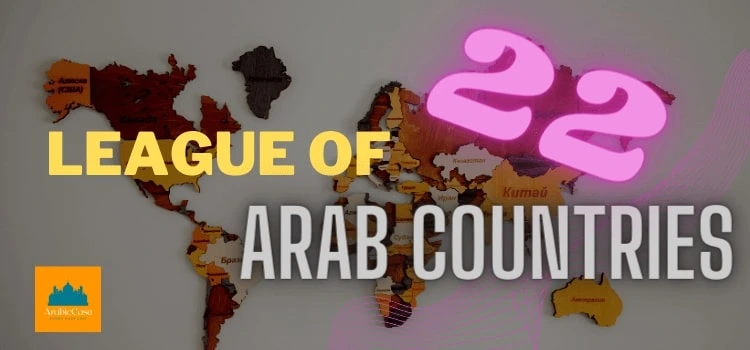Want To Know the Amazing Facts About 22 Arab Countries
The Arab world is a diverse region of the world with 22 individual nations that all have different cultures, languages, and religions with a similarity of language. This article features amazing facts about 22 Arab countries, where they’re located, what are their cultures, how many people live there, and more.
Who are Arabs?
Arabs are an ethnic group who live in the Middle East and North Africa. They are a mix of people from different parts of the world, including Europeans, Africans, and Arabs.
Arabs have a complex history and identity. Depending on who you ask, you might get a different answer for who counts as an Arab. Some people would say that Arabs are anyone who speaks Arabic. But Arabs also have a rich cultural and historical background. Most Westerners associate Arabs with Islam.
However, there are many Muslim countries that don’t speak Arabic. Arabs are also descendants of Ishmael, the firstborn son of Abraham. This definition comes from the fact that Muhammed was of the Ishmaelite tribe of Quraish. However, not all Arabs are Ishmaelites. Arabs are a complex and diverse group of people. Depending on who you ask, you might get a different answer for who counts as an Arab.
22 Arab Countries
The Arab World consists of 22 countries in the Middle East and North Africa as follows:
1. Bahrain
2. Qatar
3. United Arab Emirates
4. Oman
5. Kuwait
6. The Comoros Islands
7. Somalia
8. Libya
9. Saudi Arabia
10. Djibouti
11. Lebanon
12. Syria
13. Iraq
14. Jordan
15. Egypt
16. Algeria
17. Tunisia
18. Morocco
19. Mauritania
20. Palestine
21. Sudan
22. Saudi Arabia
Facts About 22 Arab Countries
Origin of Arab
Arabs are thought to have originated in the area that is now known as Arabia. They migrated from this area to other parts of the world over time.
The earliest Arabs, according to the Bible, were the descendants of Joktan. They lived in southern Arabia and were traders. Some of them later crossed the Red Sea to settle in Ethiopia.
The northern Arabian tribes were, for the most part, descended from Abraham through Ishmael. They inhabited the coastal area of western Arabia.
By his third wife, Keturah, Abraham had six sons, whom he sent to live in the east so that Isaac could inherit Canaan. Because they lived in essentially desert land, they were nomads.
Perhaps the best-known tribe was the Midianite tribe. Moses’ father-in-law Jethro was a Midianite, and his descendants, the Kenites, settled in Palestine with the Israelites under Joshua.
The Edomites were located in the mountainous region southeast of the Dead Sea. They were descendants of Abraham and Isaac through Esau. They often warred with Israel and were never included within the Israelite borders.
Language of Arab Countries
The official language spoken in the 22 Arab countries is Arabic, but many other languages are also spoken in different regions of these countries. Some of these languages include French, English, Turkish, Kurdish, Berber, and various African languages. Additionally, there are many dialects of Arabic spoken across the Arab world, such as Egyptian, Gulf, and Levantine dialects.
Faith Or Religion of Arabs
The 22 Arab countries, officially, have a majority of Muslims as the predominant faith. Some of these countries have a state religion that is Islam such as Saudi Arabia, while others have a more diverse religious landscape where the government is secular such Lebanon. Some other countries also have a minority of Christians and Jews.
It’s worth noting that while the majority of the population in these countries is Muslim, there are also many other religious groups present, including Christians, Jews, Yazidis, Druze, and Baha’is. There are also many different sects within Islam, such as Sunni, Shia, and Sufi. Additionally, there are many people who do not practice any religion at all.
The population of Arab Countries
The Arab League comprises 22 member states and their population varies greatly. Some of the most populous countries include Egypt, with a population of over 100 million, and Algeria, with a population of around 40 million. On the other hand, some of the least populous countries include Comoros, with a population of around 800,000, and Djibouti, with a population of around 900,000. Together, the total population of the Arab League is around 400 million people.
History of Arab Nationalism
Arab nationalism is a movement that emerged in the late 19th and early 20th centuries, that emphasizes the cultural and historical unity of the Arab people. The idea of Arab nationalism is based on the belief that the Arab people, who share a common language and culture, should have a unified political and economic system.
The origins of Arab nationalism can be traced back to the late 19th century, when the Ottoman Empire, which controlled much of the Arab world, began to weaken. As the empire declined, various Arab intellectuals, politicians, and activists began to call for greater autonomy and self-rule for the Arab people.
During the early 20th century, Arab nationalism gained momentum, particularly in the wake of World War I and the collapse of the Ottoman Empire. Arab leaders, such as Faisal I of Iraq and his father Hussein bin Ali, Sharif of Mecca, who had led Arab troops against the Ottoman Empire, made statements calling for an Arab state.
In the 1950s and 1960s, Arab nationalism reached its peak, with many Arab countries gaining independence from European colonial powers and the rise of charismatic leaders such as Gamal Abdel Nasser in Egypt, who promoted the idea of pan-Arab unity.
However, the Arab nationalism movement faced several challenges, including internal divisions and conflicts, the rise of religious and ethnic identity politics, and the intervention of foreign powers. The Six-Day War of 1967 and the defeat of the Arab states in it, was a turning point in the history of Arab nationalism.
Today, Arab nationalism is still present in the region, but it is not as prominent as it once was. Many Arab countries have adopted a more pragmatic approach to politics, focused on economic development and regional stability, rather than pan-Arab unity.
The economy of Arab Countries
The economy of Arab countries is diverse and varies greatly among the countries. Some Arab countries have large, diversified economies that are heavily dependent on oil exports, while others have smaller, less developed economies that rely on agriculture or tourism.
Oil is a major source of revenue for many Arab countries, and the oil-exporting countries of the Persian Gulf, such as Saudi Arabia, the United Arab Emirates, and Kuwait, have some of the highest GDP per capita in the world. However, this also makes these countries heavily dependent on oil prices, and fluctuations in oil prices can have a significant impact on their economies.
Other Arab countries, such as Egypt and Morocco, have more diversified economies that rely on agriculture, industry, and services. These countries are also trying to promote tourism as a source of revenue.
Despite the diversity of the Arab economies, many countries are facing similar economic challenges, such as high unemployment, particularly among young people and women, lack of diversification and dependence on natural resources, and inadequate infrastructure.
In recent years, many Arab countries have implemented economic reform measures to address these challenges, such as privatization, deregulation, and investment in infrastructure. Additionally, many countries are also working to diversify their economies and promote sectors such as technology, renewable energy, and tourism.
However, the region still faces a lot of challenges, such as political instability, security issues, low levels of foreign direct investment, and a lack of transparency in many economic transactions.
Geography of Arab Countries
The Arab countries are located in the Middle East and North Africa (MENA) region and are mostly situated on the Arabian Peninsula, in the Middle East, and in North Africa. The geography of the Arab countries is characterized by a diverse range of physical features, including deserts, mountains, coastal areas, and rivers.
The Arabian Peninsula is home to countries such as Saudi Arabia, Oman, Yemen, and the United Arab Emirates. This region is mostly desert, with vast stretches of sandy deserts such as the Rub’ al Khali and the Empty Quarter. The Arabian Peninsula is also home to several mountain ranges, including the Sarawat Mountains in Saudi Arabia and the Oman Mountains.
The Middle East is home to countries such as Iraq, Jordan, Lebanon, and Syria. This region is characterized by a diverse range of landscapes, including deserts, mountains, and fertile river valleys. The Tigris and Euphrates rivers, which run through Iraq, are important for agriculture and have been the site of human settlements for thousands of years. The Jordan River, which runs through Jordan, also has historical and religious significance.
North Africa is home to countries such as Egypt, Tunisia, and Morocco. This region is characterized by a diverse range of landscapes, including deserts, mountains, and coastal areas. The Sahara Desert, which covers much of North Africa, is one of the largest deserts in the world. The Atlas Mountains, which run through Morocco, Algeria, and Tunisia, are also an important feature of the region.
The Arab countries are also home to several important bodies of water, such as the Red Sea, the Mediterranean Sea, and the Persian Gulf. These bodies of water are important for trade, transportation, and tourism.
In summary, the geography of the Arab countries is diverse and ranges from deserts, mountains, and fertile valleys to coastal areas and rivers. The region is also rich in natural resources, particularly oil and natural gas, and it also holds historical, religious, and cultural significance.
Conclusion
The Arab countries are a group of 22 nations located in the Middle East and North Africa (MENA) region. They are mostly situated on the Arabian Peninsula, in the Middle East, and in North Africa. Their geography is characterized by a diverse range of physical features, including deserts, mountains, coastal areas, and rivers.
The official language spoken in the 22 Arab countries is Arabic, but many other languages are also spoken in different regions of these countries. The majority of the population in these countries is Muslim, but there are also many other religious groups present such as Christians, Jews, Yazidis, Druze, and Baha’is.
The economy of Arab countries varies greatly, some countries have large, diversified economies that are heavily dependent on oil exports, while others have smaller, less developed economies that rely on agriculture or tourism.

